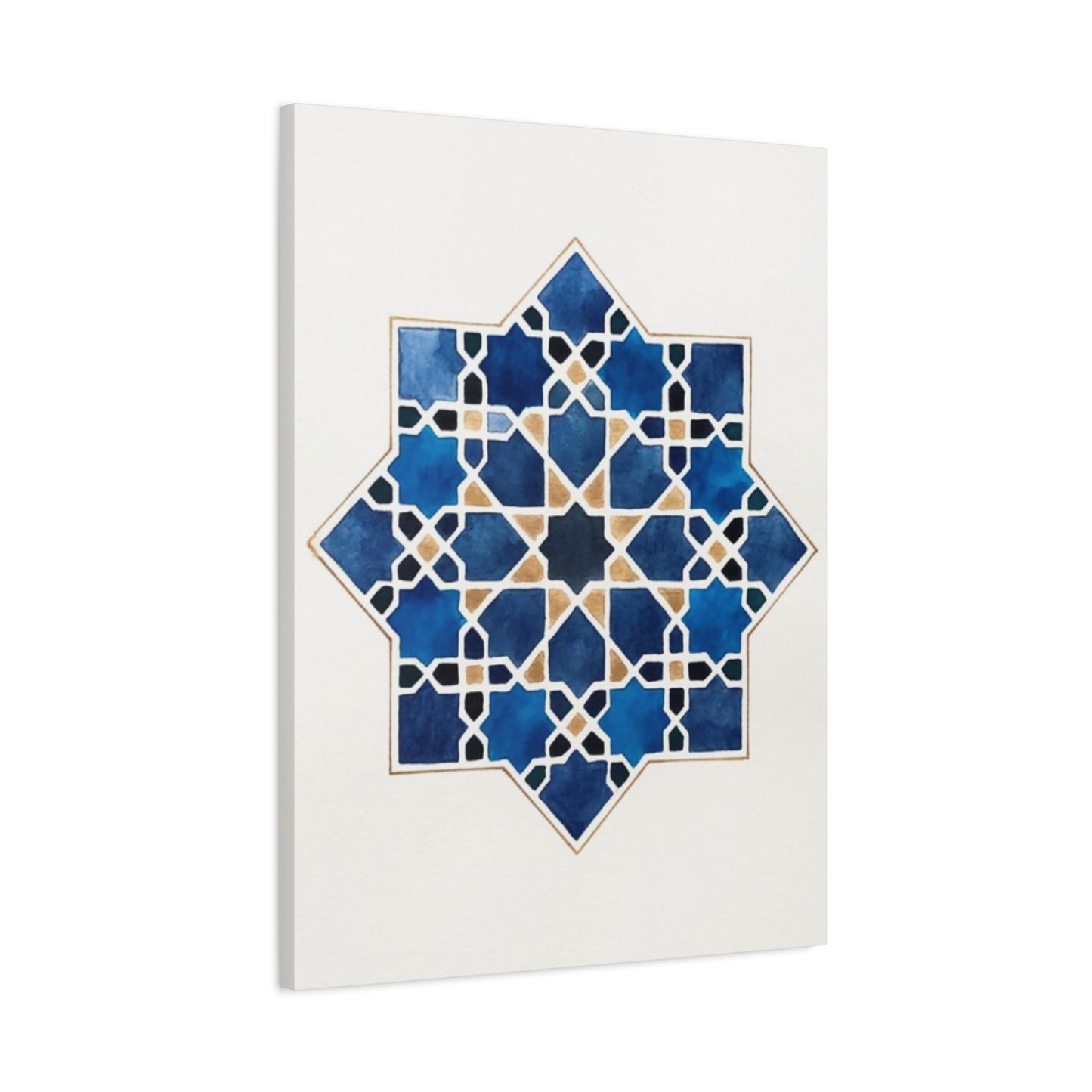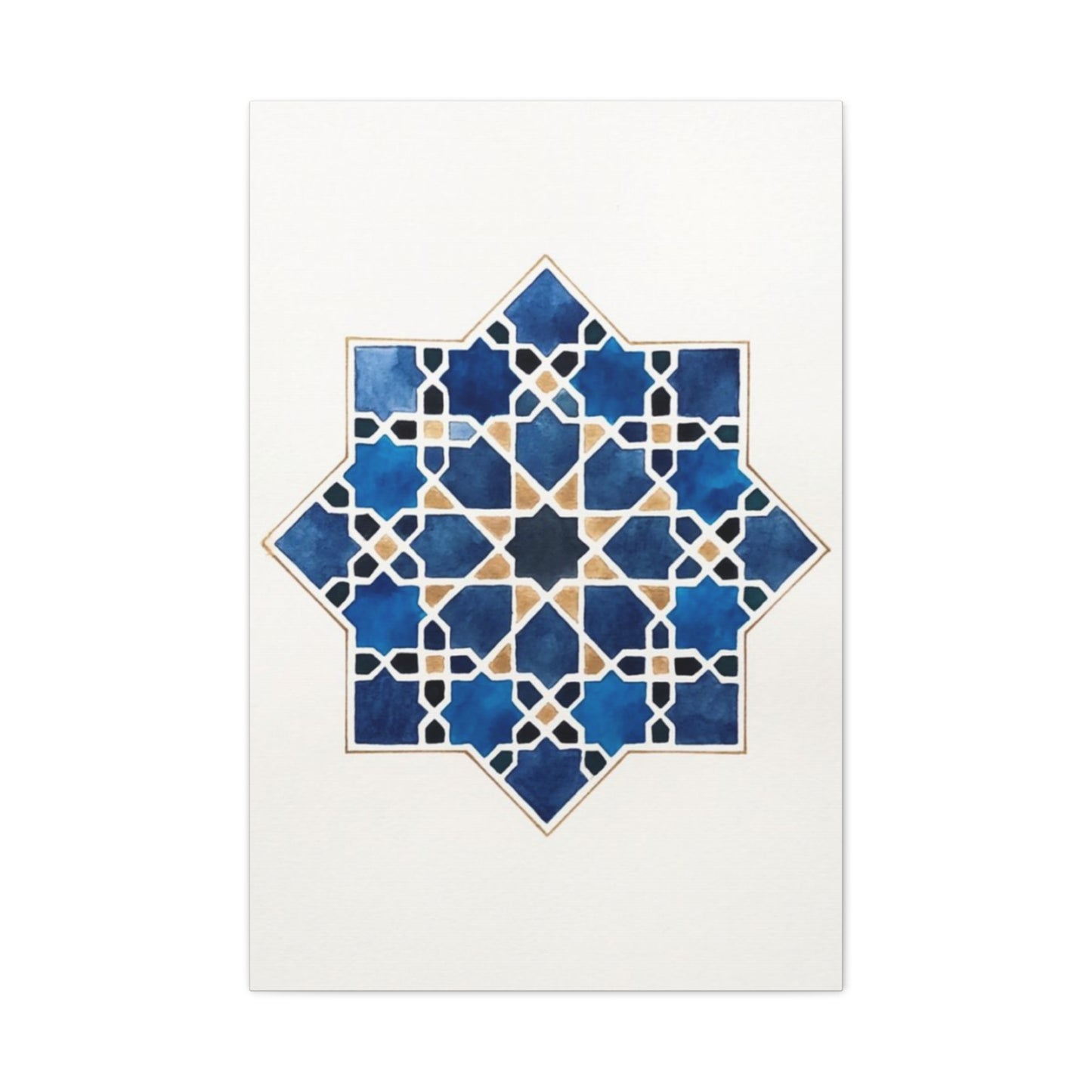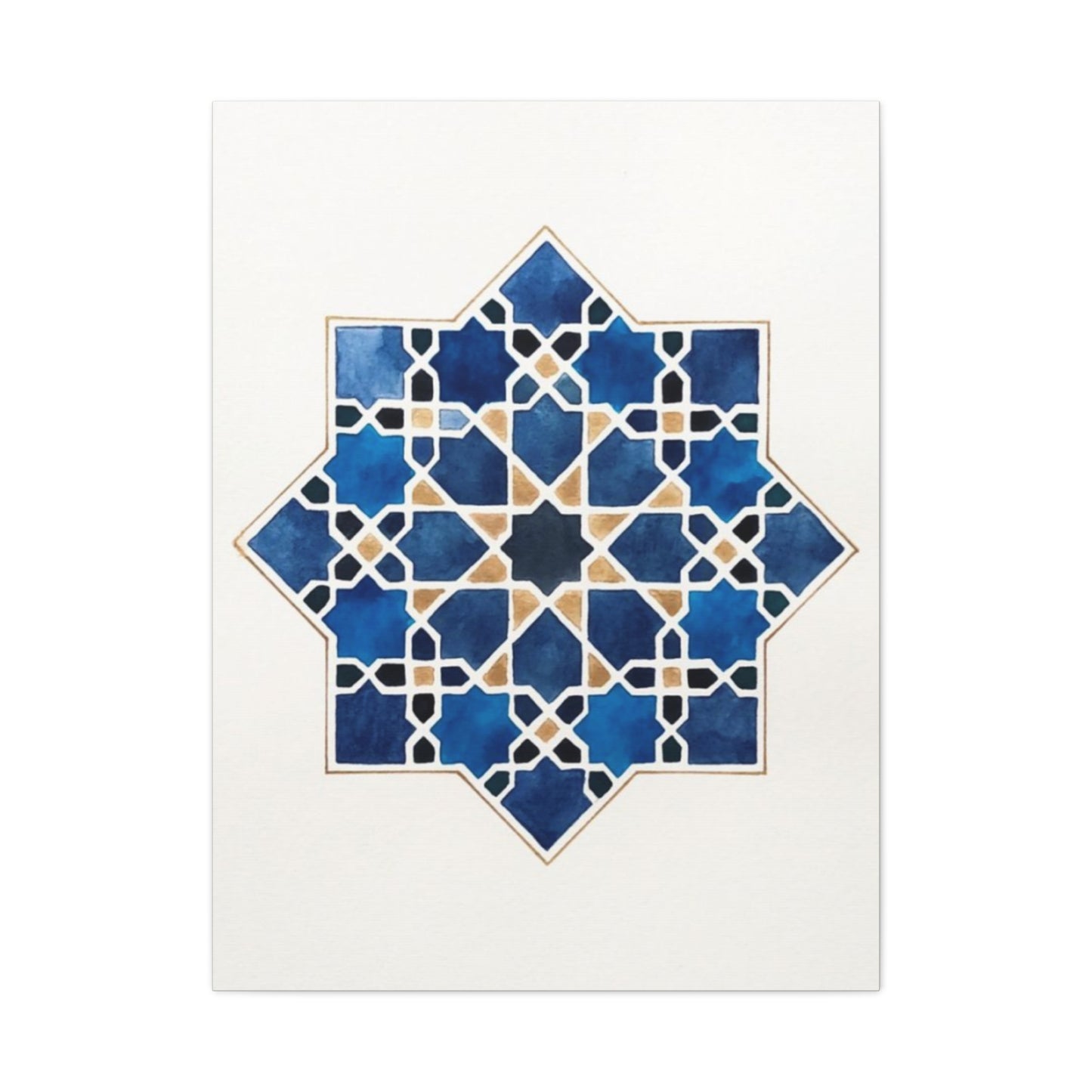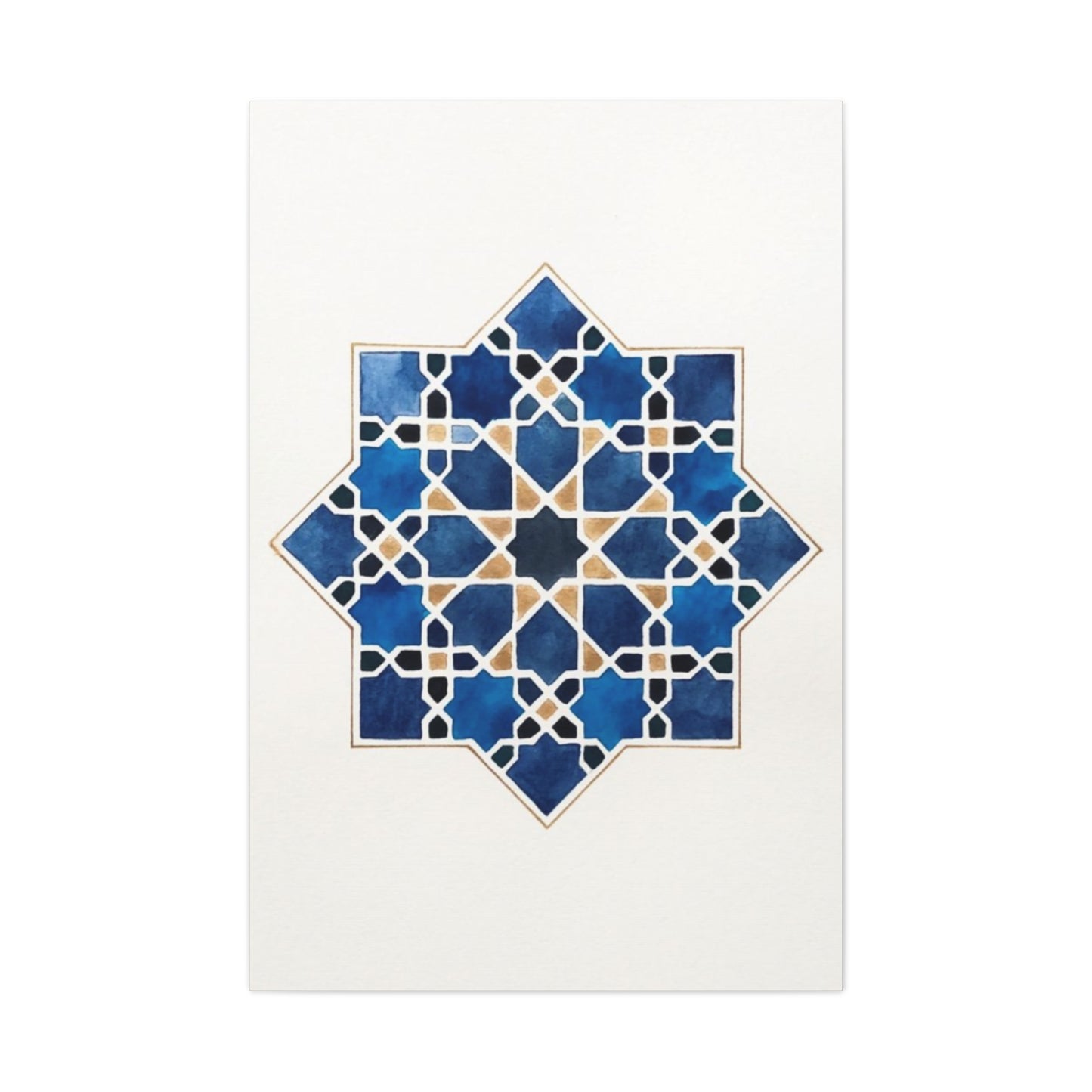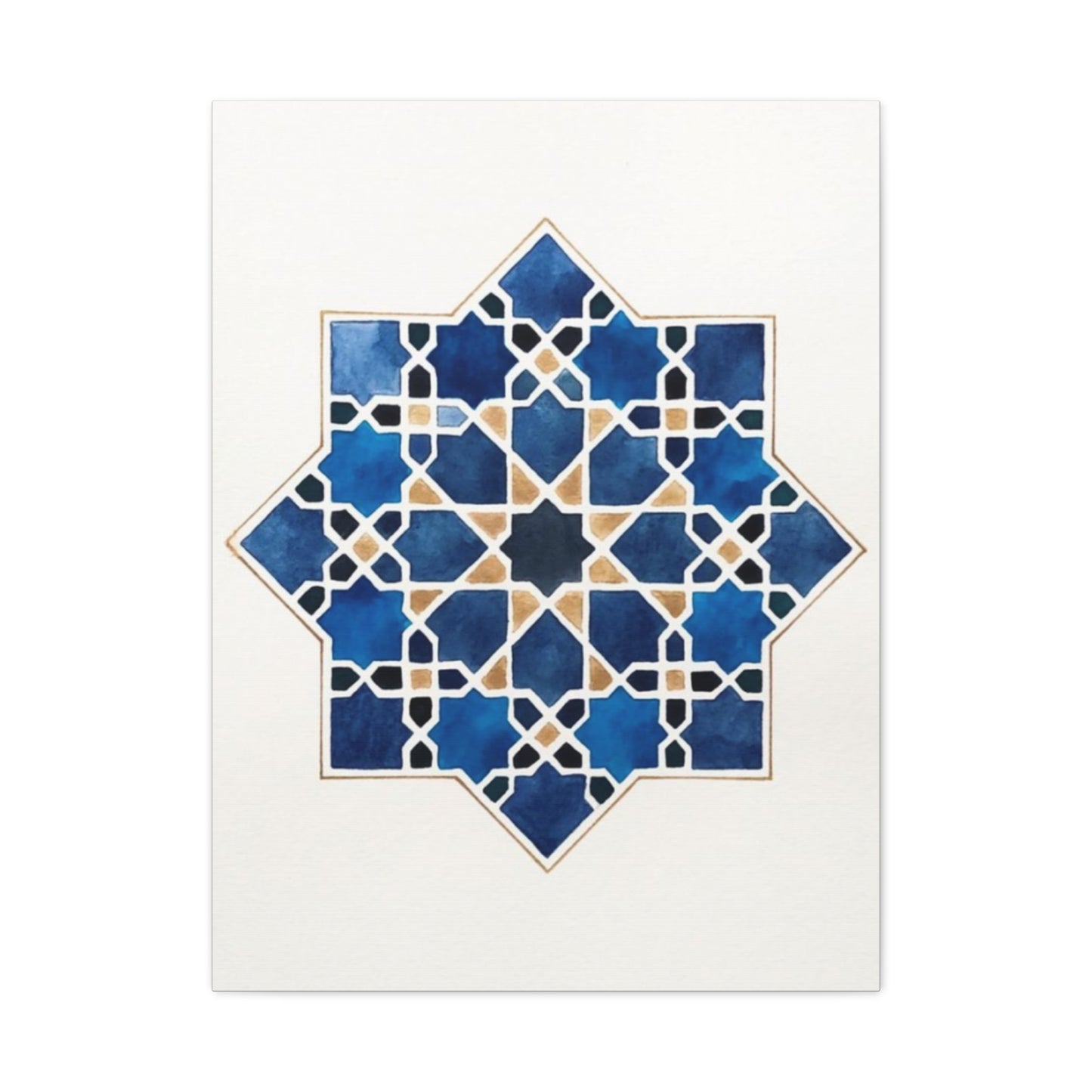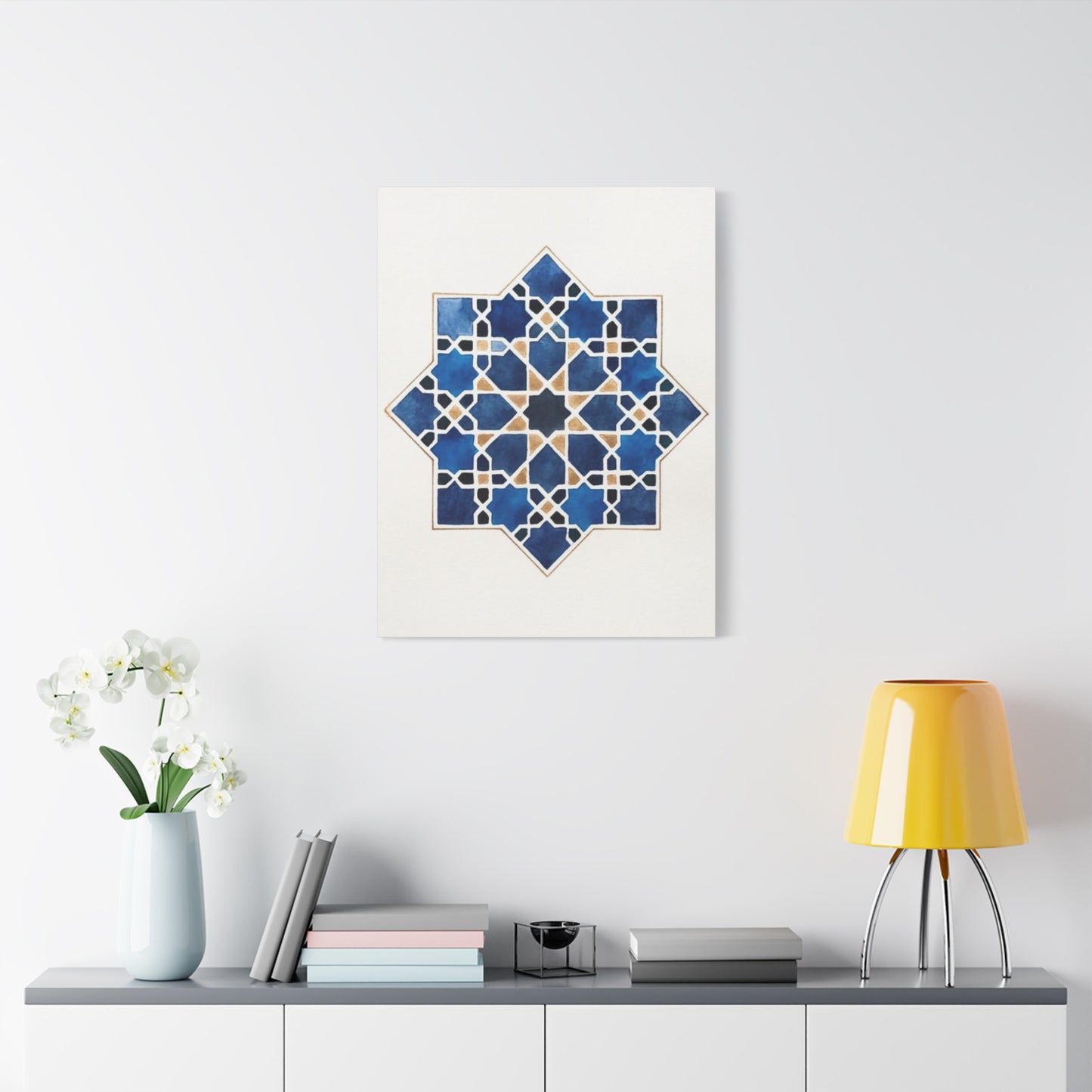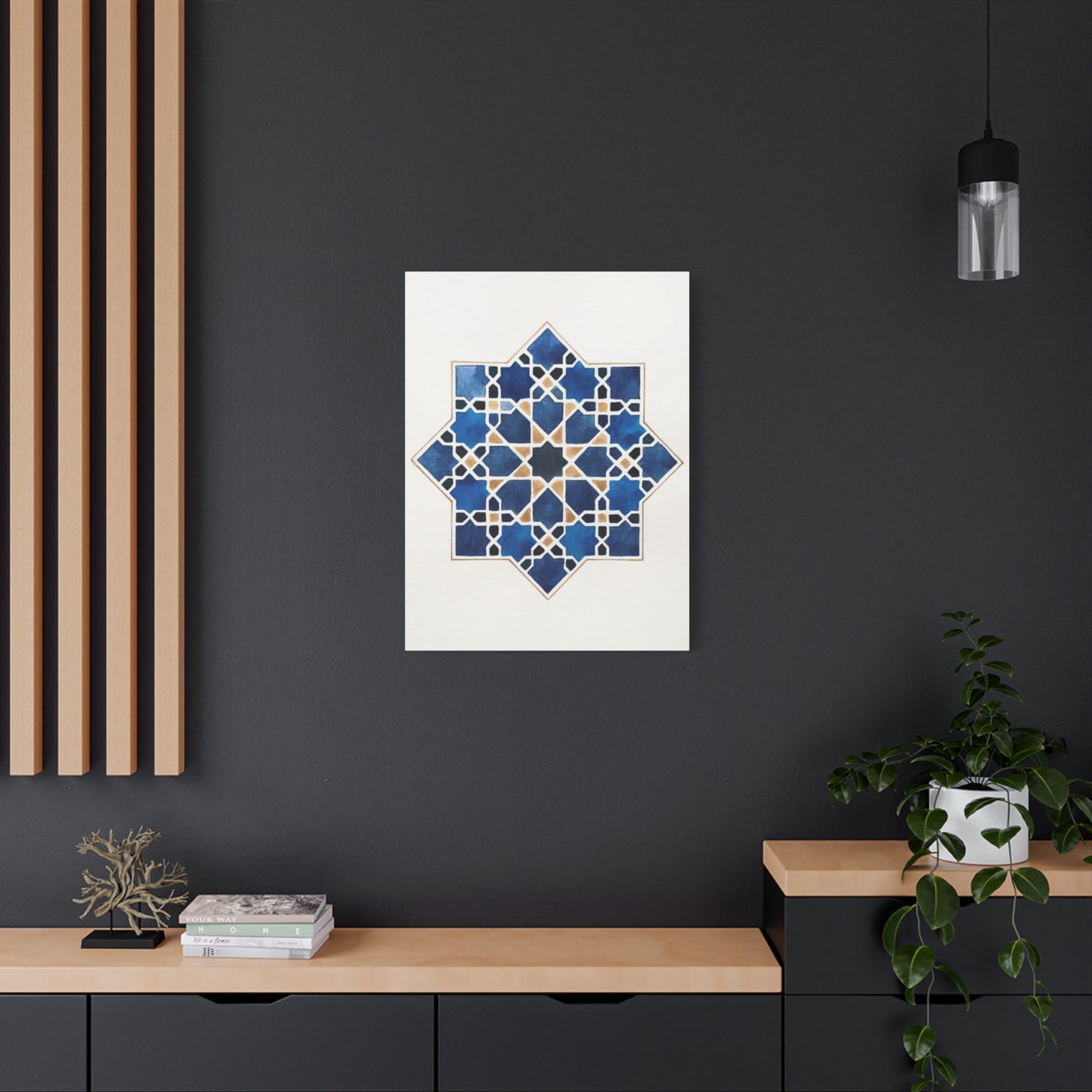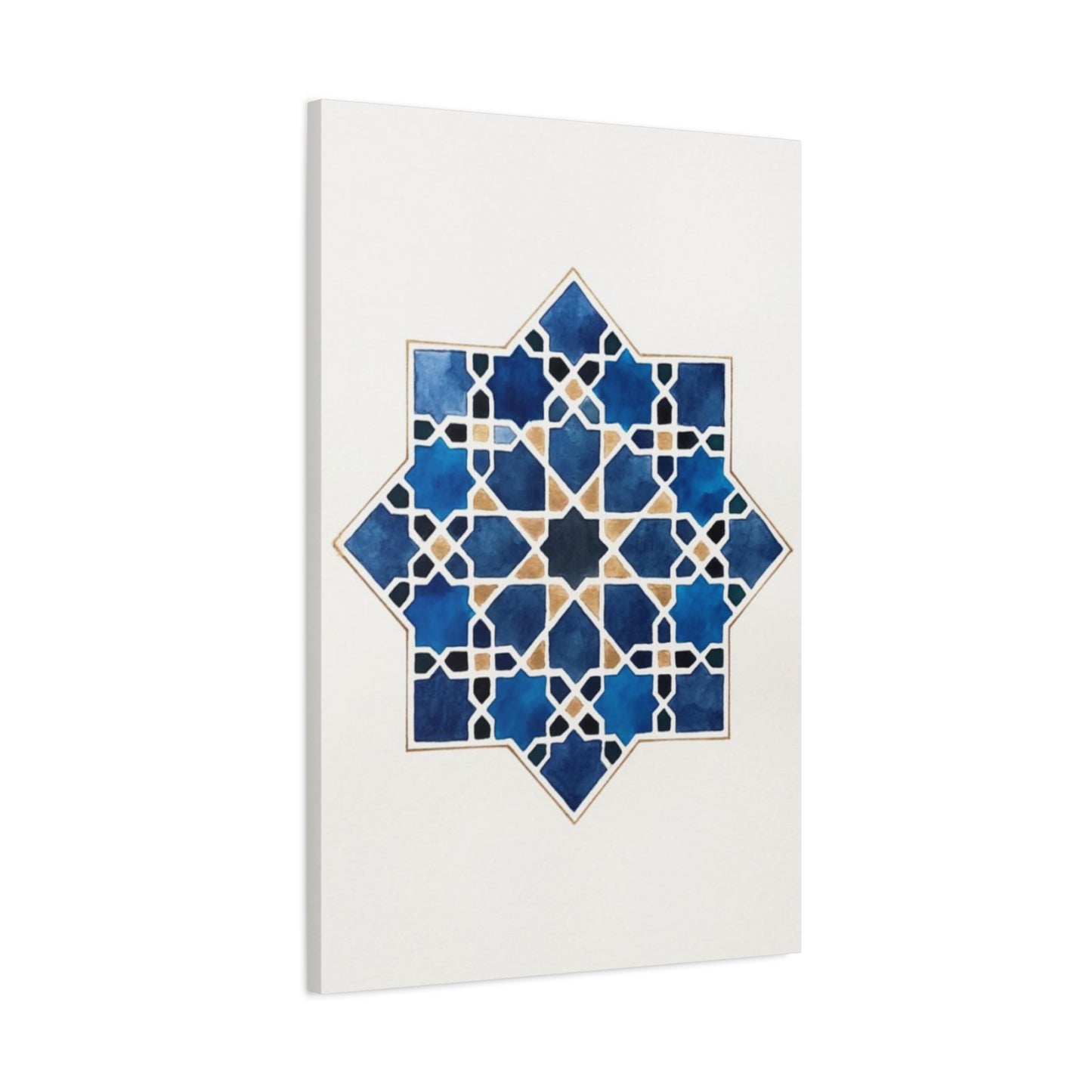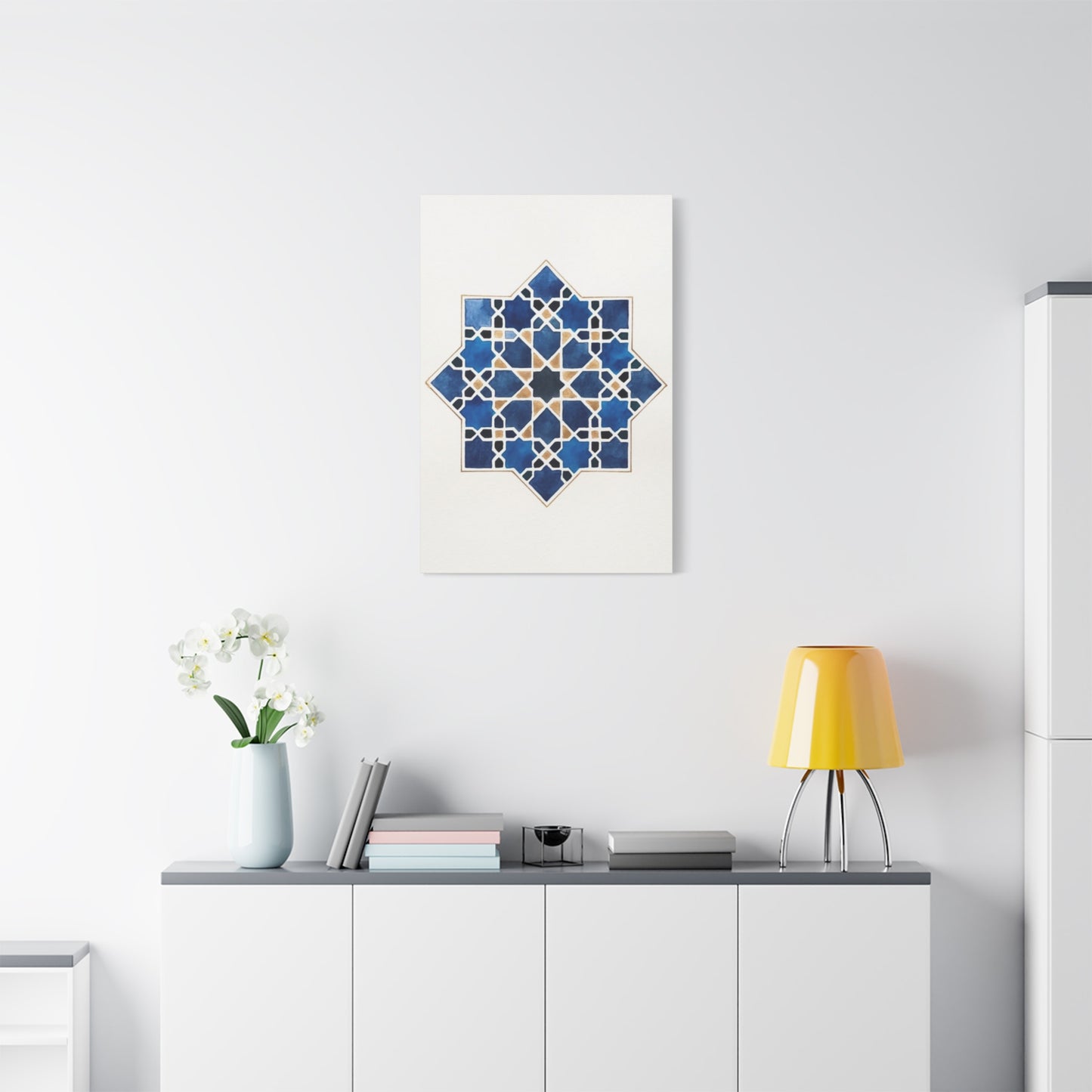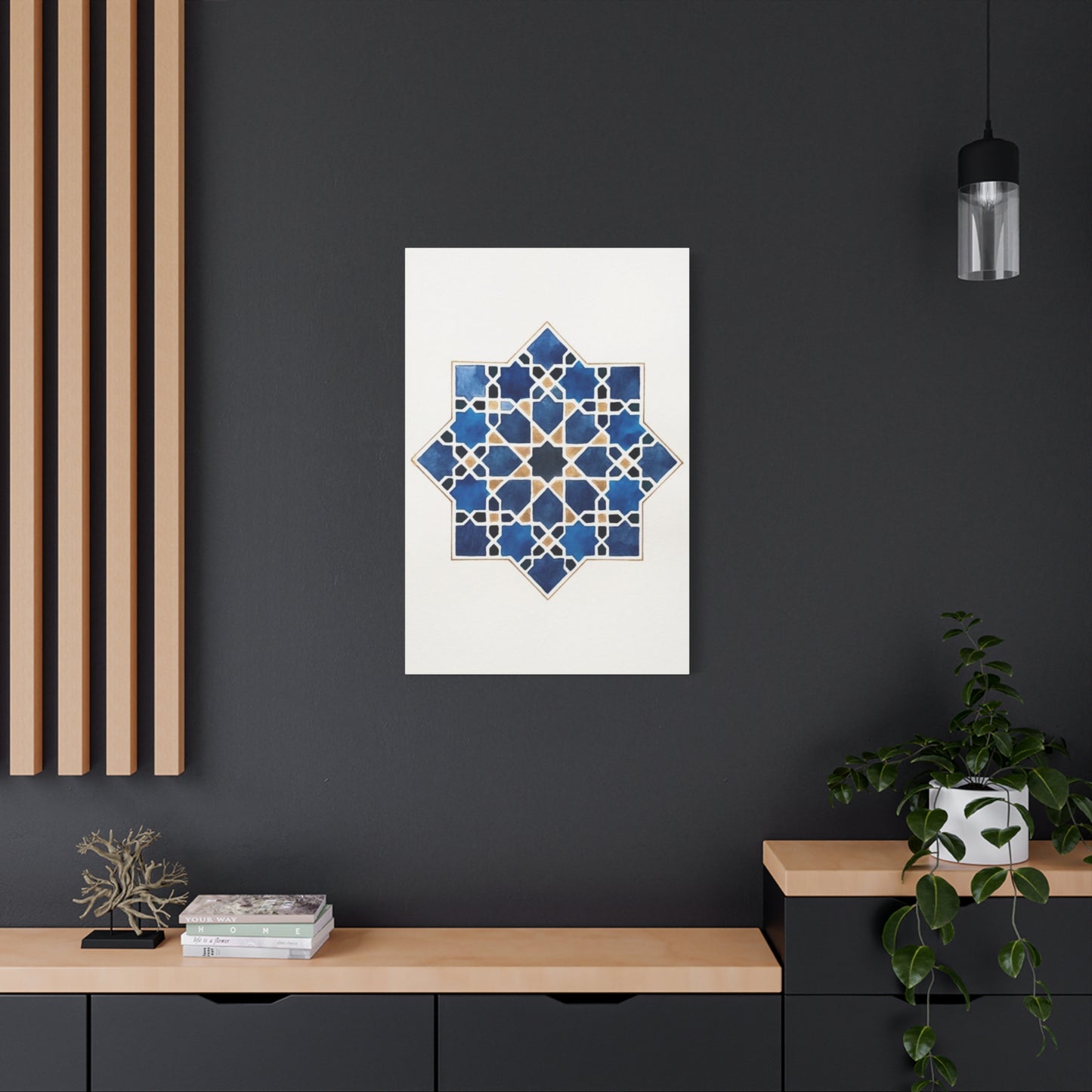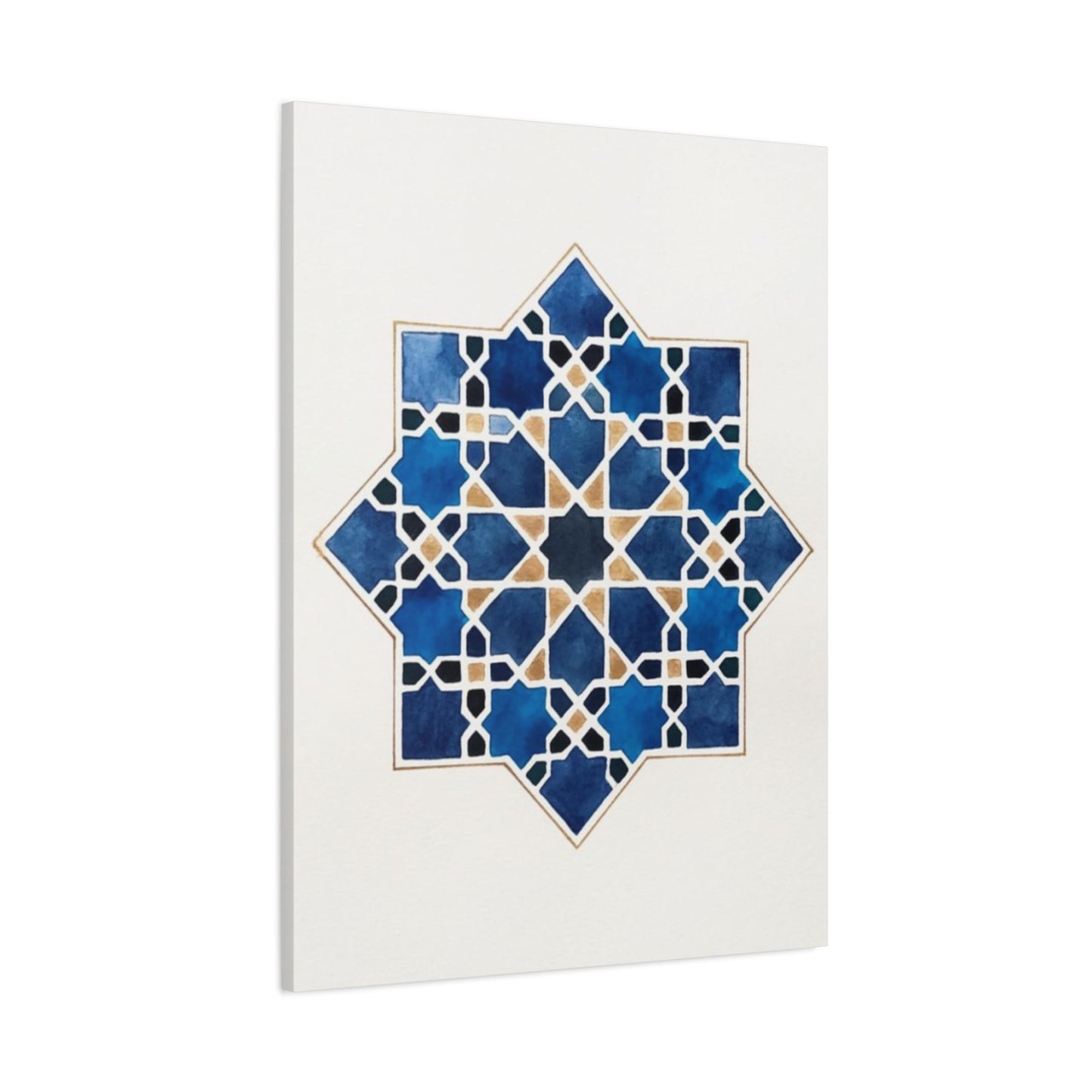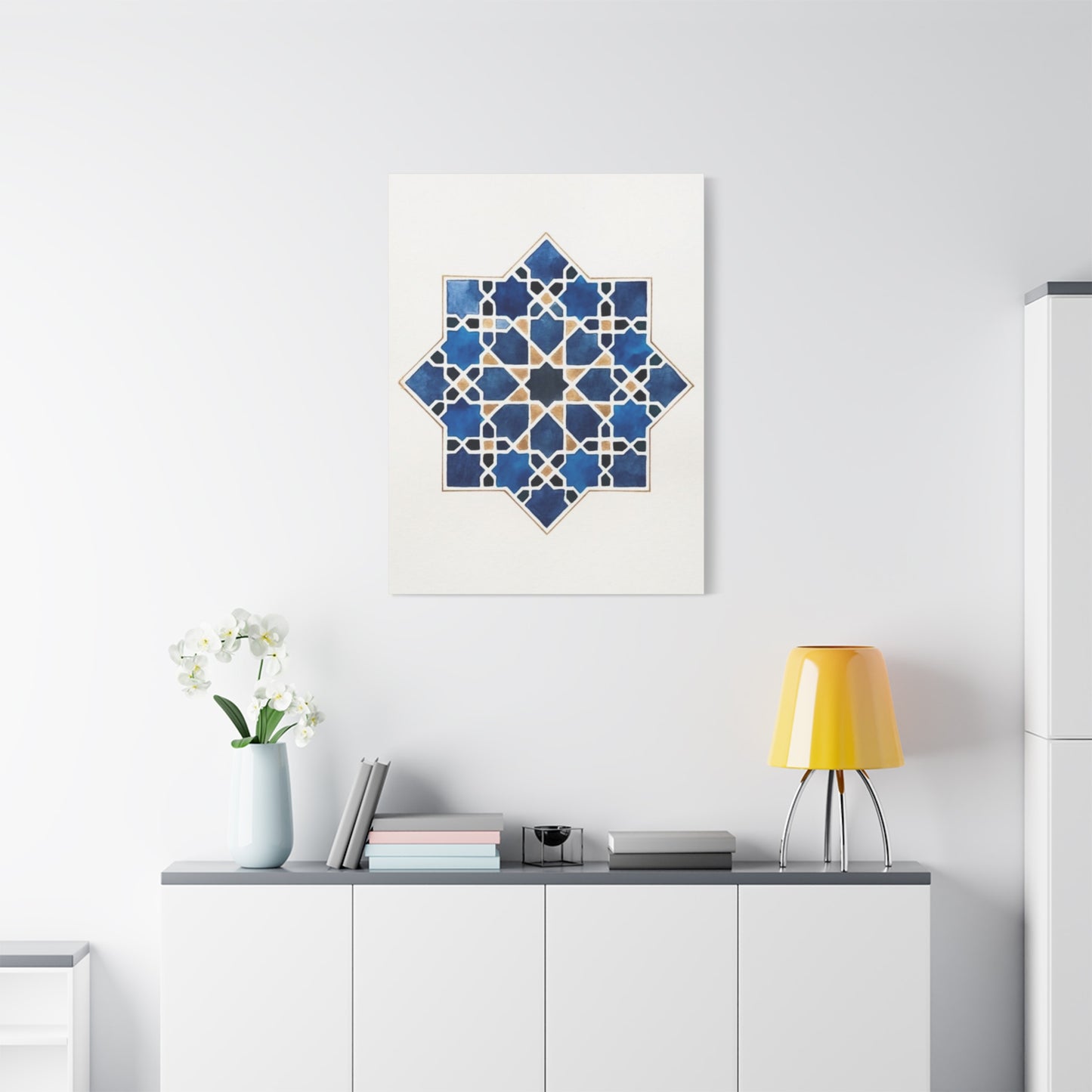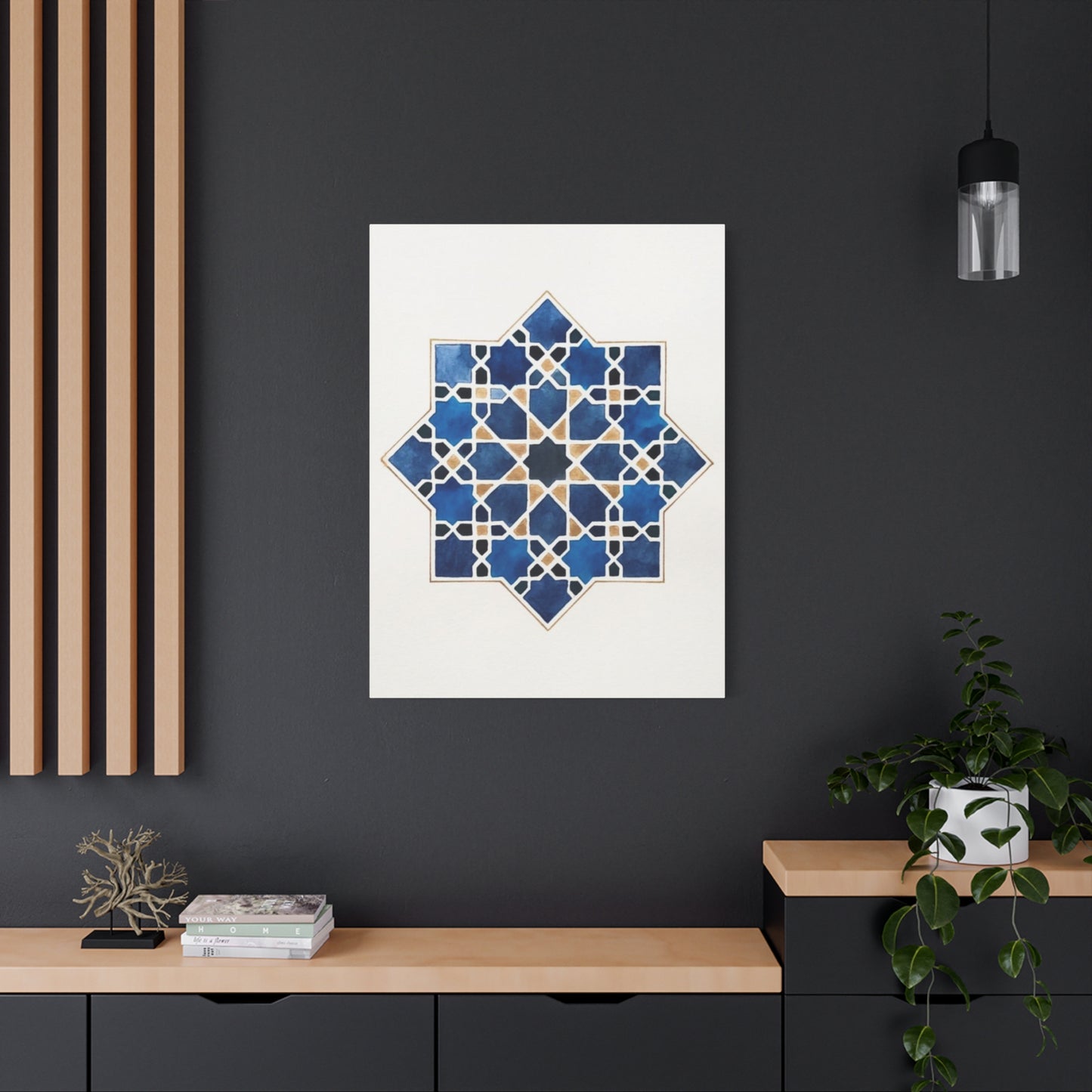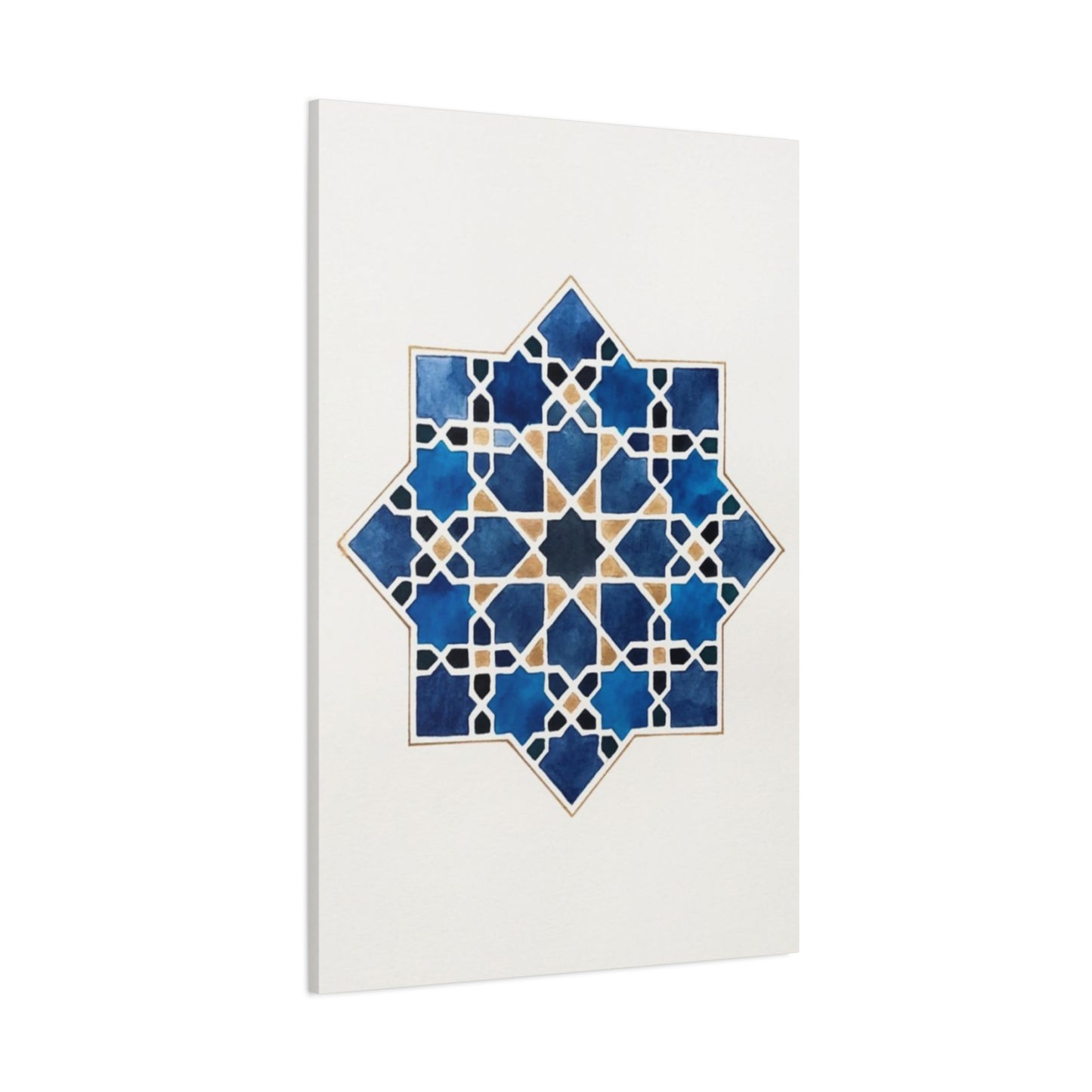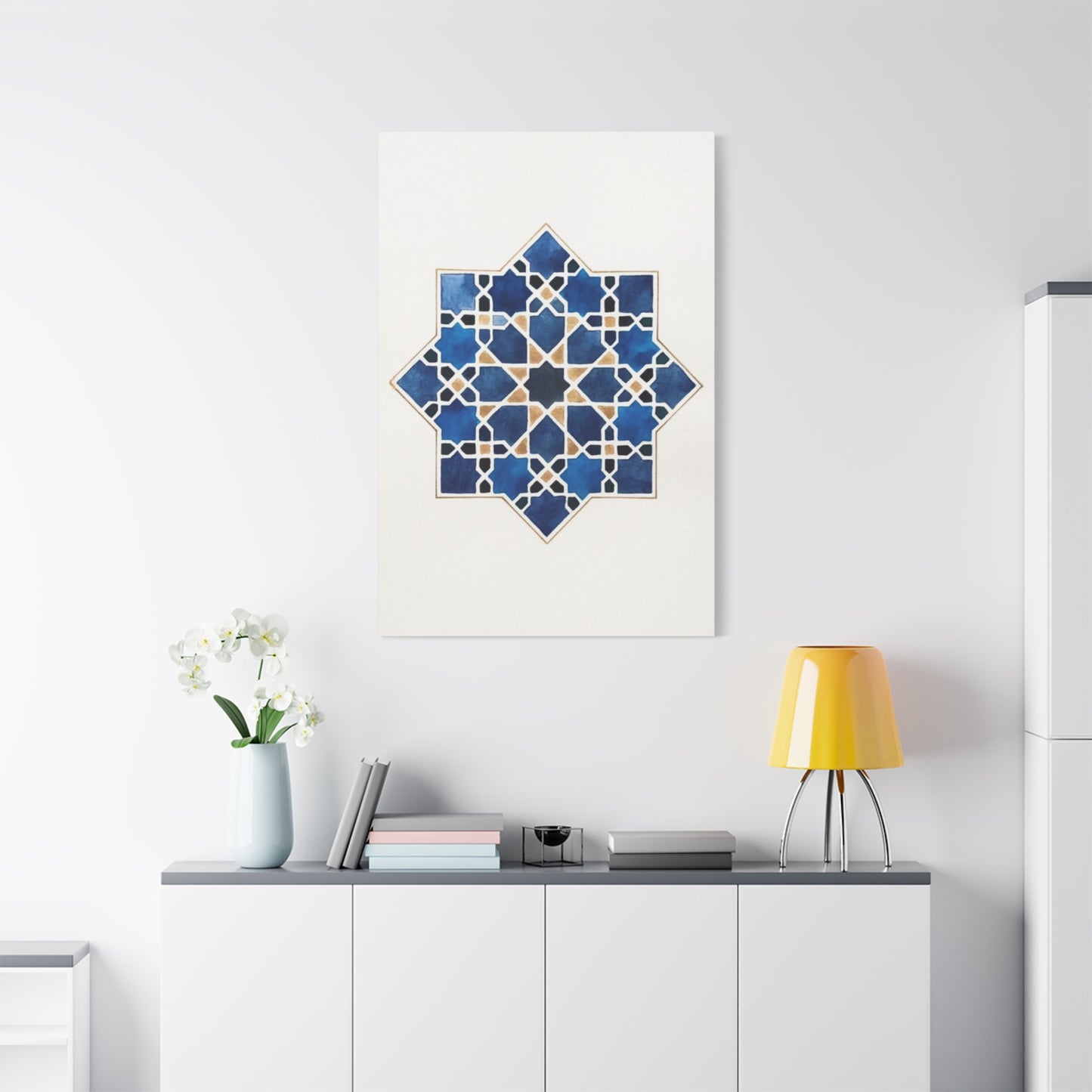Blue Moroccan Wall Art: Design Inspirations for Contemporary Living Spaces
The enchanting world of Moroccan design has captivated interior designers and homeowners alike for centuries, offering a rich tapestry of colors, patterns, and cultural heritage that transforms ordinary spaces into extraordinary sanctuaries. Among the most sought-after elements in contemporary interior design, blue Moroccan wall art stands as a testament to the timeless appeal of North African aesthetics. This ancient art form, rooted in centuries of Islamic geometric traditions and Berber craftsmanship, continues to evolve and adapt to modern living spaces while maintaining its authentic charm and spiritual significance.
Blue, in Moroccan culture, represents more than just a color choice; it embodies protection, peace, and divine connection. From the famous blue city of Chefchaouen to the intricate zellige tiles adorning palaces and mosques, blue has been an integral part of Moroccan artistic expression for generations. When incorporated into contemporary wall art, these blue elements create a bridge between traditional craftsmanship and modern design sensibilities, offering homeowners an opportunity to infuse their living spaces with both cultural richness and aesthetic sophistication.
The versatility of blue Moroccan wall art makes it an ideal choice for various interior design styles, from minimalist modern homes to eclectic bohemian spaces. Whether expressed through hand-painted tiles, geometric patterns, or contemporary interpretations of traditional motifs, blue Moroccan wall art offers endless possibilities for creating visually striking and emotionally resonant environments. The calming properties of blue combined with the intricate beauty of Moroccan patterns create a unique design solution that addresses both aesthetic and psychological needs in modern living.
Stunning Blue Moroccan Wall Art Ideas
Creating stunning blue Moroccan wall art requires an understanding of both traditional motifs and contemporary applications. The beauty of Moroccan design lies in its mathematical precision and spiritual symbolism, where each pattern tells a story and serves a purpose beyond mere decoration. Blue Moroccan wall art ideas can range from simple accent pieces to elaborate feature walls that become the focal point of entire rooms.
One of the most impactful approaches to blue Moroccan wall art involves creating large-scale installations that showcase the intricate beauty of traditional patterns. These installations can feature hand-painted reproductions of classic Moroccan tile work, where deep cobalt blues are interwoven with crisp whites and subtle silver accents. The geometric precision of these designs creates a mesmerizing visual effect that draws the eye and creates a sense of movement and depth on flat surfaces.
Contemporary interpretations of blue Moroccan wall art often incorporate mixed media approaches, combining traditional patterns with modern materials and techniques. Artists and designers are experimenting with metallic accents, textured surfaces, and three-dimensional elements to create wall art that pays homage to Moroccan traditions while speaking to contemporary aesthetic sensibilities. These pieces often feature gradient blue tones that shift from deep navy to soft powder blue, creating depth and visual interest that changes with lighting conditions throughout the day.
The use of modular blue Moroccan wall art pieces allows for flexible arrangements that can be customized to fit various space requirements. These modular systems often consist of individual tiles or panels that can be arranged in countless configurations, allowing homeowners to create unique compositions that reflect their personal style while maintaining the coherent visual language of Moroccan design. The modular approach also offers practical benefits, as pieces can be easily replaced or rearranged as tastes and needs change.
Digital printing technology has opened new possibilities for blue Moroccan wall art, allowing for the reproduction of intricate patterns at various scales and on different materials. High-resolution digital prints can capture the subtle variations in traditional hand-painted tiles, while also enabling the creation of oversized installations that would be impractical with traditional methods. These digital reproductions often feature enhanced color saturation and precision that can make blue Moroccan patterns appear even more vibrant and detailed than their handmade counterparts.
The integration of lighting with blue Moroccan wall art creates dramatic effects that enhance the visual impact of these designs. Strategic placement of LED strips or spotlights can create shadow play that emphasizes the geometric patterns and adds depth to flat surfaces. The cool tones of blue Moroccan designs respond particularly well to warm lighting, which creates a beautiful contrast that makes the blue elements appear more luminous and engaging.
Textural variations in blue Moroccan wall art add another dimension to these designs, moving beyond flat printed or painted surfaces to incorporate raised elements, carved details, and layered compositions. These textural elements can be achieved through various techniques, including embossed printing, carved wood overlays, or sculpted plaster applications that mimic the dimensional quality of traditional Moroccan architecture.
The scale of blue Moroccan wall art can dramatically affect its impact within a space. Large-scale installations create immersive environments that transport viewers to the souks and palaces of Morocco, while smaller, more delicate pieces can serve as subtle accents that add sophistication without overwhelming the existing decor. Understanding how to balance scale with space requirements is crucial for achieving the desired aesthetic impact.
How to Style Blue Moroccan Patterns at Home
Styling blue Moroccan patterns at home requires a thoughtful approach that considers both the cultural significance of these designs and their compatibility with existing decor elements. The key to successful integration lies in understanding the principles of Moroccan design and adapting them to contemporary living requirements while maintaining their authentic character and visual impact.
The first consideration when styling blue Moroccan patterns is the selection of appropriate spaces within the home. These patterns work exceptionally well in areas where relaxation and contemplation are prioritized, such as bedrooms, meditation spaces, or reading nooks. The calming properties of blue combined with the repetitive, meditative quality of Moroccan geometric patterns create environments conducive to rest and reflection.
Color coordination plays a crucial role in successfully styling blue Moroccan patterns at home. The rich blues characteristic of Moroccan design pair beautifully with neutral backgrounds, allowing the patterns to take center stage while maintaining visual balance. Warm neutrals such as cream, beige, and soft gray provide an ideal backdrop that enhances the cool tones of blue Moroccan elements without creating color conflicts.
The layering of patterns is another important aspect of styling blue Moroccan designs at home. Traditional Moroccan interiors often feature multiple patterns working in harmony, creating rich, complex visual environments. However, in contemporary homes, it's important to exercise restraint and choose patterns that complement rather than compete with each other. Blue Moroccan wall patterns can be successfully combined with solid colors, subtle textures, or smaller-scale geometric patterns in coordinating colors.
Furniture selection should complement blue Moroccan wall patterns rather than compete with them for visual attention. Simple, clean-lined furniture in neutral colors provides an ideal counterpoint to the complexity of Moroccan patterns. Natural materials such as wood, leather, and linen add warmth and texture that balances the cool, precise geometry of blue Moroccan designs.
Lighting considerations are crucial when styling blue Moroccan patterns at home. These patterns respond beautifully to both natural and artificial light, but the quality and direction of lighting can dramatically affect their appearance. Soft, diffused lighting enhances the meditative quality of Moroccan patterns, while dramatic accent lighting can create striking shadow play that emphasizes their geometric complexity.
The integration of authentic Moroccan accessories and decorative objects can enhance the overall styling of blue Moroccan patterns at home. Brass lanterns, ceramic vessels, woven textiles, and carved wooden elements all contribute to creating a cohesive Moroccan-inspired environment. However, it's important to select accessories that complement rather than overwhelm the wall patterns, maintaining a balance between authenticity and contemporary livability.
Room proportion and scale must be carefully considered when styling blue Moroccan patterns at home. In smaller spaces, large-scale patterns can be overwhelming, while in larger rooms, small patterns may appear insignificant. The key is to select pattern scales that are appropriate for the room size and to use them strategically to enhance rather than dominate the space.
The concept of focal points is essential when styling blue Moroccan patterns at home. These patterns are naturally eye-catching and should be used strategically to direct attention and create visual hierarchy within a room. A single accent wall featuring blue Moroccan patterns can serve as a dramatic focal point, while smaller pattern elements can be used to create visual connections throughout a space.
Maintenance and longevity should also be considered when styling blue Moroccan patterns at home. High-quality materials and proper installation ensure that these design elements will maintain their beauty over time. Regular cleaning and protection from direct sunlight help preserve the vibrant blue colors and intricate pattern details that make these designs so appealing.
Top Trends in Moroccan Wall Decor
The world of Moroccan wall decor continues to evolve, with contemporary designers and artists finding innovative ways to interpret traditional motifs for modern living spaces. Current trends in Moroccan wall decor reflect a growing appreciation for handcrafted elements, sustainable materials, and personalized design solutions that honor cultural heritage while meeting contemporary aesthetic and functional requirements.
One of the most significant trends in Moroccan wall decor is the movement toward authentic, handcrafted pieces that showcase traditional artisan techniques. Consumers are increasingly seeking out genuine zellige tiles, hand-painted ceramics, and carved plaster elements that demonstrate the skill and artistry of Moroccan craftspeople. This trend reflects a broader cultural shift toward valuing authenticity and craftsmanship in an increasingly digital world.
Sustainability has become a major consideration in Moroccan wall decor trends, with designers and manufacturers focusing on eco-friendly materials and production methods. Reclaimed wood, recycled metals, and low-impact ceramic production techniques are being employed to create Moroccan-inspired wall decor that aligns with contemporary environmental consciousness. This sustainable approach often results in pieces with unique character and patina that enhance their visual appeal.
The customization trend has significantly impacted Moroccan wall decor, with many manufacturers offering bespoke design services that allow customers to create personalized interpretations of traditional patterns. Digital design tools enable the creation of custom color palettes, pattern modifications, and scale adjustments that ensure perfect integration with existing decor schemes while maintaining the essential character of Moroccan design.
Minimalist interpretations of Moroccan wall decor represent another significant trend, where traditional complex patterns are simplified and refined to appeal to contemporary tastes. These designs maintain the geometric essence of Moroccan patterns while reducing visual complexity, making them suitable for modern minimalist interiors that prioritize clean lines and uncluttered spaces.
The integration of technology with traditional Moroccan wall decor has opened new possibilities for interactive and dynamic installations. Smart lighting systems can be programmed to highlight different aspects of Moroccan patterns throughout the day, while digital projection systems can create ever-changing pattern displays that maintain the visual interest of traditional designs while offering unprecedented flexibility.
Mixed media approaches are becoming increasingly popular in Moroccan wall decor, combining traditional ceramic or tile elements with contemporary materials such as metal, glass, and synthetic composites. These hybrid designs offer new textural and visual possibilities while maintaining connection to traditional Moroccan aesthetic principles.
The trend toward modular and reconfigurable Moroccan wall decor systems reflects contemporary lifestyle needs for flexibility and adaptability. These systems allow homeowners to modify their wall decor arrangements as their needs and preferences change, while maintaining the visual coherence of Moroccan design principles.
Color trend analysis reveals a shift toward more nuanced and sophisticated color palettes in Moroccan wall decor. While traditional bold blues, whites, and earth tones remain popular, there's growing interest in subtle gradations, muted tones, and unexpected color combinations that maintain Moroccan character while appealing to contemporary color sensibilities.
The wellness trend has influenced Moroccan wall decor development, with increased focus on designs that promote relaxation, meditation, and mental well-being. Patterns and colors are being specifically selected and arranged to create calming environments that support stress reduction and mindfulness practices.
Large-scale installations continue to trend in Moroccan wall decor, with entire walls or rooms being transformed into immersive environments that transport occupants to Moroccan spaces. These installations often combine multiple traditional elements including patterns, textures, colors, and lighting to create comprehensive sensory experiences.
Geometric Blue Art for Modern Interiors
Geometric blue art represents a sophisticated interpretation of traditional Moroccan design principles adapted for contemporary interior spaces. This design approach combines the mathematical precision and spiritual symbolism of Islamic geometric patterns with the calming, sophisticated appeal of blue color palettes, creating wall art that serves both aesthetic and psychological functions in modern homes.
The foundation of geometric blue art lies in the complex mathematical relationships that govern traditional Islamic and Moroccan pattern systems. These patterns are based on precise geometric principles that create infinite, seamless designs capable of expansion in all directions. When rendered in various shades of blue, these geometric patterns take on new dimensions of beauty and meaning, with the color blue adding layers of symbolism related to protection, infinity, and divine connection.
Modern interpretations of geometric blue art often simplify traditional complex patterns while maintaining their essential mathematical relationships and visual harmony. Contemporary designers extract key elements from traditional Moroccan patterns and reinterpret them using modern color theory, materials, and production techniques. The result is wall art that honors traditional craftsmanship while speaking directly to contemporary aesthetic sensibilities.
The versatility of geometric blue art makes it particularly suitable for modern interiors that prioritize clean lines, functional design, and visual clarity. Unlike more ornate traditional Moroccan patterns, geometric blue art can integrate seamlessly with minimalist design philosophies while still providing visual interest and cultural richness. The precision and order inherent in geometric patterns complement the structured approach of modern interior design.
Scale plays a crucial role in the effectiveness of geometric blue art in modern interiors. Large-scale geometric patterns can create dramatic focal points that anchor entire rooms, while smaller-scale patterns can provide subtle textural interest without overwhelming clean modern lines. The ability to adjust pattern scale allows designers to customize geometric blue art to suit various spatial requirements and design objectives.
Color gradation techniques add sophisticated depth to geometric blue art, moving beyond flat, uniform color applications to create patterns with dimensional quality and visual complexity. Gradient effects, color transitions, and subtle tonal variations can make geometric patterns appear to float, recede, or advance, creating dynamic visual experiences that change with viewing angle and lighting conditions.
The integration of geometric blue art with modern lighting systems creates opportunities for dramatic visual effects that enhance the mathematical beauty of these patterns. LED lighting strips can be integrated directly into geometric installations, outlining pattern elements and creating luminous effects that emphasize the precision and beauty of geometric relationships.
Contemporary production techniques enable the creation of geometric blue art at unprecedented scales and levels of precision. Digital printing, laser cutting, and CNC machining allow for the reproduction of complex geometric patterns with mathematical accuracy while enabling customization and personalization that was previously impossible with traditional handcraft methods.
The psychological impact of geometric blue art in modern interiors extends beyond pure aesthetics to influence mood, behavior, and well-being. The meditative quality of repetitive geometric patterns combined with the calming properties of blue creates environments that support relaxation, concentration, and stress reduction. This psychological dimension makes geometric blue art particularly valuable in modern homes where occupants seek respite from busy, stressful lifestyles.
Material innovation continues to expand the possibilities for geometric blue art in modern interiors. New synthetic materials, advanced ceramics, and composite materials enable the creation of geometric patterns with properties and characteristics that exceed traditional materials in durability, precision, and visual impact while maintaining authentic aesthetic appeal.
The modular nature of many geometric blue art systems allows for flexible installation and reconfiguration, supporting the contemporary preference for adaptable, personalized living spaces. Modular geometric patterns can be arranged and rearranged to create different visual effects and to accommodate changing spatial requirements or aesthetic preferences.
Bringing Calm with Blue Moroccan Designs
The inherent calming properties of blue Moroccan designs stem from both the psychological effects of the color blue and the meditative qualities of traditional Moroccan patterns. Blue, universally associated with tranquility, stability, and peace, has been scientifically proven to lower blood pressure, reduce anxiety, and promote relaxation. When combined with the rhythmic, repetitive patterns characteristic of Moroccan design, blue creates powerful tools for stress reduction and environmental harmony.
Traditional Moroccan patterns are rooted in Islamic geometric principles that emphasize infinite repetition, mathematical precision, and spiritual symbolism. These patterns are designed to facilitate meditation and contemplation, with their endless, seamless repetition creating visual experiences that can induce calm, focused mental states. The combination of these meditative patterns with calming blue colors creates wall art that serves therapeutic as well as aesthetic functions.
The concept of visual rhythm plays a crucial role in how blue Moroccan designs promote calm environments. The repetitive nature of Moroccan patterns creates visual rhythms that can synchronize with natural biological rhythms, promoting feelings of harmony and balance. Blue colors enhance this effect by providing a consistent, soothing visual foundation that supports rather than disrupts these beneficial rhythmic patterns.
Scientific research into color psychology demonstrates that blue environments can reduce cortisol levels, lower heart rate, and promote the release of calming neurotransmitters. Blue Moroccan designs leverage these physiological responses while adding the cultural and spiritual dimensions that make these designs particularly effective at creating peaceful environments. The combination of scientific color theory with traditional pattern wisdom creates uniquely effective calming design solutions.
The scale and proportion of blue Moroccan designs significantly affect their calming impact. Larger patterns can create immersive environments that completely transform the psychological atmosphere of a space, while smaller patterns provide subtle calming influences that support overall environmental harmony without overwhelming other design elements. Understanding how to balance pattern scale with spatial requirements is crucial for maximizing calming effects.
Lighting interaction with blue Moroccan designs can enhance or diminish their calming properties. Soft, diffused lighting enhances the peaceful qualities of blue patterns, while harsh or dramatic lighting can create visual tension that counteracts calming effects. Natural lighting changes throughout the day can create dynamic calming experiences as blue Moroccan patterns respond differently to various lighting conditions.
The positioning of blue Moroccan designs within living spaces affects their calming impact on daily life. Placement in areas where people spend extended periods, such as bedrooms, living rooms, or home offices, maximizes exposure to calming visual influences. Strategic placement can also create calming transition zones that help occupants shift between different activity states throughout the day.
Material selection for blue Moroccan designs affects their calming properties through both visual and tactile qualities. Natural materials such as ceramics, stone, and wood add warmth and organic texture that enhance the calming effects of blue patterns, while synthetic materials can provide consistency and durability that maintains calming visual effects over time.
The cultural and spiritual associations of blue Moroccan designs add psychological depth to their calming properties. Understanding the cultural significance of these patterns and colors can enhance their psychological impact, as knowledge of their protective and spiritual meanings can reinforce their calming effects through cognitive as well as purely visual pathways.
Customization of blue Moroccan designs for specific calming objectives allows for personalized therapeutic environments. Individual preferences for pattern complexity, color intensity, and cultural associations can be incorporated into custom designs that maximize calming effects for specific users and applications.
Maintenance and longevity considerations are important for preserving the calming properties of blue Moroccan designs over time. Fading, damage, or deterioration can diminish both the aesthetic and psychological benefits of these designs, making proper care and protection essential for maintaining their long-term calming effectiveness.
Moroccan Tiles as Wall Art Inspiration
Traditional Moroccan tiles, known as zellige, represent one of the world's oldest and most sophisticated ceramic traditions, offering endless inspiration for contemporary wall art applications. These hand-crafted tiles, with their irregular surfaces, subtle color variations, and centuries-old production techniques, provide authentic foundations for modern interpretations that maintain cultural integrity while meeting contemporary design requirements.
The production process of traditional Moroccan tiles involves techniques that have remained unchanged for over a thousand years, with artisans using clay from specific regions of Morocco and applying glazes using traditional formulas and firing methods. This handcraft heritage creates tiles with unique character, subtle imperfections, and natural variations that cannot be replicated by machine production. These authentic qualities serve as inspiration for contemporary wall art that seeks to capture the essence of handcraft in modern contexts.
Color development in traditional Moroccan tiles follows ancient formulas that create distinctive hues and surface qualities that have become synonymous with Moroccan design. The famous Moroccan blue, achieved through specific mineral compositions and firing techniques, creates colors that seem to shift and change with lighting conditions. Contemporary interpretations of these colors for wall art applications often involve extensive research and development to achieve similar depth and complexity using modern materials and methods.
Pattern systems in traditional Moroccan tile work are based on complex mathematical principles that govern how individual tiles fit together to create infinite, seamless patterns. These geometric relationships provide frameworks for contemporary wall art that can be scaled, modified, and adapted while maintaining the essential mathematical harmony that makes traditional Moroccan patterns so visually compelling and psychologically satisfying.
The modular nature of traditional Moroccan tiles offers practical inspiration for contemporary wall art systems that need to accommodate various spatial requirements and installation challenges. The ability to create large-scale installations using small, manageable components provides flexibility and adaptability that is particularly valuable in contemporary construction and renovation projects.
Surface texture variations in traditional Moroccan tiles, resulting from handcraft production methods, create subtle light reflection patterns that add depth and visual interest to tile installations. Contemporary wall art inspired by Moroccan tiles often incorporates similar textural variations through advanced manufacturing techniques that simulate handcraft irregularities while providing the consistency and durability required for modern applications.
Installation techniques for traditional Moroccan tiles involve specialized skills and methods that have been refined over generations. These traditional installation approaches inspire contemporary mounting and display systems for Moroccan-inspired wall art, ensuring that modern interpretations maintain the visual integrity and stability of traditional tile work while accommodating contemporary building methods and requirements.
Maintenance and restoration practices for traditional Moroccan tiles provide insights into long-term care requirements for contemporary wall art inspired by these materials. Understanding traditional cleaning, repair, and protection methods helps inform the design and specification of modern Moroccan-inspired wall art systems that will maintain their beauty and integrity over extended periods.
Cultural and symbolic meanings embedded in traditional Moroccan tile patterns and colors provide rich inspiration for contemporary interpretations that seek to maintain authentic cultural connections. Understanding the spiritual, protective, and decorative functions of traditional patterns helps contemporary designers create wall art that honors cultural heritage while serving modern aesthetic and functional requirements.
Regional variations in Moroccan tile traditions offer diverse sources of inspiration for contemporary wall art applications. Different regions of Morocco have developed distinct tile-making traditions with unique colors, patterns, and techniques that provide varied inspiration for modern interpretations seeking to capture specific regional characteristics or to combine elements from multiple traditions.
Innovation within traditional Moroccan tile production, including new color developments and pattern variations created by contemporary Moroccan artisans, provides ongoing inspiration for wall art applications that maintain connection to living cultural traditions while embracing modern aesthetic developments.
Decorating Tips with Blue Moroccan Prints
Successfully incorporating blue Moroccan prints into contemporary interiors requires understanding both the cultural significance of these designs and the practical considerations of modern living spaces. Blue Moroccan prints offer unique opportunities to add color, pattern, and cultural richness to homes while maintaining the clean, functional aesthetic preferences of contemporary design.
Room selection plays a crucial role in the successful application of blue Moroccan prints, with different spaces offering varying opportunities for pattern integration. Bedrooms provide ideal environments for blue Moroccan prints, as the calming properties of blue combined with the meditative qualities of Moroccan patterns create restful environments conducive to sleep and relaxation. Living areas can accommodate larger, more dramatic applications of blue Moroccan prints that serve as conversation pieces and focal points.
Size and scale considerations are fundamental to successful decoration with blue Moroccan prints. Large-scale prints can create dramatic focal points that anchor entire rooms, while smaller prints can provide subtle pattern interest without overwhelming existing decor. The key is matching print scale to room proportions and furniture scale to achieve visual harmony and appropriate emphasis.
Color coordination strategies help integrate blue Moroccan prints with existing color schemes and furniture selections. The cool tones of blue Moroccan prints work particularly well with warm neutral backgrounds, creating pleasing color contrasts that enhance both the patterns and the surrounding decor. Understanding color temperature relationships helps ensure that blue Moroccan prints complement rather than conflict with existing color investments.
Lighting strategies can dramatically enhance the visual impact of blue Moroccan prints while supporting their decorative objectives. Natural lighting brings out the subtle color variations and pattern details in blue Moroccan prints, while artificial lighting can be used to create dramatic effects and to ensure adequate visibility during evening hours. Avoiding harsh, direct lighting helps maintain the subtle beauty and calming properties of these designs.
Furniture arrangement considerations help maximize the decorative impact of blue Moroccan prints while ensuring functional room layouts. Furniture placement should direct attention toward blue Moroccan print installations while maintaining clear circulation paths and functional furniture groupings. Simple, clean-lined furniture provides ideal counterpoints to the complexity of Moroccan patterns.
Accessory coordination helps create cohesive environments where blue Moroccan prints integrate seamlessly with other decorative elements. Selecting accessories that complement rather than compete with Moroccan prints ensures visual harmony and prevents overwhelming busy environments. Natural materials, neutral colors, and simple forms typically work well with blue Moroccan patterns.
Maintenance considerations affect both the selection and placement of blue Moroccan prints in contemporary homes. High-quality printing materials and proper mounting systems ensure longevity and maintain appearance over time. Strategic placement away from direct sunlight, moisture, and high-traffic areas helps preserve print quality and prevents premature deterioration.
Seasonal decoration strategies can incorporate blue Moroccan prints into changing decorative schemes throughout the year. The versatility of blue colors allows these prints to work with both warm and cool seasonal color palettes, while the timeless appeal of Moroccan patterns ensures year-round relevance and visual interest.
Budget considerations help guide selection and application of blue Moroccan prints within various economic constraints. High-quality prints represent worthwhile investments that maintain beauty and value over time, while budget-conscious approaches can still achieve effective decorative results through careful selection and strategic placement of smaller print elements.
Installation and mounting techniques ensure that blue Moroccan prints are displayed to best advantage while providing adequate protection and stability. Professional installation may be warranted for large or valuable prints, while smaller prints can often be successfully installed using standard picture hanging techniques and materials.
Elevate Your Space with Moroccan Wall Patterns
Moroccan wall patterns possess the unique ability to transform ordinary interior spaces into extraordinary environments that reflect both cultural sophistication and aesthetic refinement. The mathematical precision, spiritual symbolism, and artistic beauty inherent in traditional Moroccan patterns provide powerful tools for space transformation that go beyond simple decoration to create immersive experiences.
Architectural integration of Moroccan wall patterns can fundamentally alter the perceived character and scale of interior spaces. Large-scale pattern applications can make small rooms appear larger through visual expansion effects, while carefully positioned patterns can direct attention and create focal points that enhance spatial hierarchy and flow. Understanding these spatial effects enables strategic pattern placement that supports both aesthetic and functional objectives.
The psychological impact of Moroccan wall patterns extends beyond visual aesthetics to influence occupant behavior, mood, and well-being. The meditative qualities of repetitive geometric patterns can create environments that promote concentration, creativity, and relaxation. These psychological benefits make Moroccan wall patterns particularly valuable in home offices, studios, and other spaces where mental performance and emotional well-being are important considerations.
Cultural authenticity in Moroccan wall pattern applications adds layers of meaning and interest that enhance their decorative impact. Understanding the historical development, regional variations, and symbolic meanings of traditional patterns enables more informed selection and application that honors cultural heritage while serving contemporary needs. This cultural depth adds intellectual and emotional resonance that enhances long-term satisfaction with pattern installations.
Customization opportunities in Moroccan wall patterns allow for personalized space transformations that reflect individual tastes and requirements while maintaining authentic cultural connections. Modern production techniques enable pattern modifications, color adjustments, and scale variations that create unique installations while preserving the essential mathematical and aesthetic principles that make Moroccan patterns so compelling.
Technology integration with Moroccan wall patterns opens new possibilities for dynamic, interactive space transformations. Smart lighting systems can be programmed to highlight different pattern elements throughout the day, creating changing visual experiences that maintain interest and provide functional lighting solutions. Digital projection systems can create temporary pattern installations for special events or seasonal decorations.
Sustainability considerations in Moroccan wall pattern applications reflect contemporary environmental consciousness while maintaining authentic aesthetic appeal. Eco-friendly materials, low-impact production methods, and durable installation techniques ensure that pattern installations support environmental goals while providing long-lasting beauty and functionality.
Economic value considerations make Moroccan wall patterns attractive investments for space transformation projects. High-quality pattern installations can increase property values while providing years of aesthetic enjoyment and functional benefits. The timeless appeal of traditional patterns ensures that installations remain relevant and valuable even as design trends change.
Flexibility and adaptability in Moroccan wall pattern systems support changing lifestyle needs and preferences over time. Modular pattern systems allow for reconfiguration and updating without complete replacement, while removable installation methods enable pattern relocation or modification as space requirements change.
Professional installation services ensure optimal results for complex Moroccan wall pattern projects while providing expertise in pattern layout, color matching, and installation techniques. Professional installers understand the specific requirements of different pattern types and materials, ensuring proper installation that maximizes both aesthetic impact and longevity.
Maintenance and care programs help preserve the beauty and functionality of Moroccan wall pattern installations over extended periods. Regular cleaning, protection from environmental damage, and periodic restoration ensure that pattern investments continue to provide aesthetic and functional benefits throughout their useful lives.
Blue Hues in Moroccan-Inspired Interiors
The strategic use of blue hues in Moroccan-inspired interiors creates sophisticated environments that balance traditional cultural authenticity with contemporary aesthetic sensibilities. Blue, as a primary color in Moroccan design tradition, carries deep cultural significance while offering practical advantages for modern interior design applications, including versatility, timelessness, and psychological benefits that support comfortable, functional living.
Traditional Moroccan blue pigments derived from natural minerals and traditional production methods create distinctive hues that cannot be exactly replicated using modern synthetic pigments. However, contemporary color matching techniques can achieve very close approximations that capture the essential character and visual impact of traditional Moroccan blues while providing the consistency and durability required for modern interior applications.
The psychology of blue in interior environments supports its use in Moroccan-inspired designs that prioritize comfort, relaxation, and well-being. Scientific research demonstrates that blue environments can reduce stress, lower blood pressure, and promote cognitive clarity, making blue hues particularly appropriate for residential interiors where occupant comfort and health are primary considerations.
Color temperature variations in blue hues allow for sophisticated color schemes that support different functional and aesthetic objectives within Moroccan-inspired interiors. Cool blues create fresh, calming environments ideal for bedrooms and relaxation areas, while warmer blue tones can create more intimate, cozy atmospheres appropriate for dining and social areas.
The interaction of blue hues with natural and artificial lighting significantly affects their appearance and impact within interior spaces. Understanding these lighting relationships enables strategic color selection and placement that ensures optimal visual results throughout daily lighting cycles. Blue hues that appear vibrant in natural daylight may appear subdued under artificial lighting, requiring careful consideration of lighting design to maintain desired aesthetic effects.
Complementary color relationships help integrate blue hues into balanced, harmonious color schemes for Moroccan-inspired interiors. Traditional Moroccan color palettes often combine blues with warm earth tones, crisp whites, and metallic accents that create visually sophisticated and culturally authentic environments. Understanding these traditional relationships guides contemporary color selections that maintain authentic appeal while meeting modern aesthetic preferences.
Texture and material interactions with blue hues add depth and visual interest to Moroccan-inspired interiors. Different materials reflect and absorb blue light differently, creating subtle variations that add richness and complexity to monochromatic blue color schemes. Glossy ceramics enhance blue vibrancy, while matte plasters create softer, more subdued effects.
Pattern integration with blue hues requires careful consideration of both color and design relationships to achieve successful Moroccan-inspired interiors. Complex geometric patterns in blue can become overwhelming if not balanced with simpler design elements, while subtle pattern applications may lack sufficient visual impact to achieve desired aesthetic effects.
Regional variations in traditional Moroccan blue applications provide diverse inspiration for contemporary interior color schemes. Different regions of Morocco have developed distinct approaches to blue usage, from the intense cobalt blues of Fez ceramics to the softer powder blues found in coastal regions, offering varied models for contemporary interpretation.
Seasonal adaptation of blue hues in Moroccan-inspired interiors acknowledges the changing quality of natural light and the psychological effects of seasonal color preferences. Deeper, more saturated blues may be more appropriate for winter environments, while lighter, more ethereal blues can create refreshing summer atmospheres.
Economic considerations in blue hue selection for Moroccan-inspired interiors include both initial investment costs and long-term maintenance requirements. High-quality blue pigments and finishes may require larger initial investments but often provide better longevity and color stability, making them more economical over time.
Minimalist Homes with Moroccan Wall Art
The integration of Moroccan wall art into minimalist homes presents unique design challenges and opportunities that require careful balance between cultural richness and contemporary simplicity. Minimalist design philosophy emphasizes clean lines, uncluttered spaces, and functional beauty, while Moroccan art traditions celebrate pattern complexity, cultural symbolism, and decorative abundance. Successfully combining these approaches creates sophisticated environments that honor both design philosophies.
Scale relationships become particularly critical when incorporating Moroccan wall art into minimalist homes, where every design element must justify its presence through both aesthetic and functional contributions. Large-scale Moroccan art pieces can serve as singular focal points that provide all necessary pattern and color interest, while smaller pieces may become lost within the clean expanses typical of minimalist environments.
Color restraint helps maintain minimalist aesthetic principles while allowing for meaningful incorporation of Moroccan wall art elements. Limiting Moroccan art to monochromatic or near-monochromatic color schemes ensures that pattern complexity doesn't overwhelm minimalist spaces with excessive visual information. Blue monochromatic schemes work particularly well, providing cultural authenticity while maintaining visual calm.
Pattern simplification involves extracting essential elements from complex traditional Moroccan designs while maintaining their fundamental character and cultural authenticity. Contemporary interpretations of Moroccan patterns often reduce detail density and complexity while preserving key geometric relationships and proportional systems that give these patterns their distinctive appeal and mathematical harmony.
Negative space utilization in minimalist homes with Moroccan wall art requires strategic placement that allows patterns to breathe and maintains the sense of spatial openness essential to minimalist design success. Moroccan wall art should enhance rather than compromise the feeling of spaciousness that defines quality minimalist environments.
Material selection for Moroccan wall art in minimalist homes should emphasize quality over quantity, with careful attention to surface finishes, mounting systems, and integration details that support rather than disrupt minimalist aesthetic principles. Clean, precise installation details help Moroccan art elements appear as integral parts of minimalist environments rather than added decorations.
Lighting integration becomes especially important in minimalist homes where Moroccan wall art may represent the primary decorative elements. Lighting design should enhance the beauty of Moroccan patterns while supporting overall environmental illumination needs without creating visual clutter through excessive fixture visibility or complexity.
Functional considerations help justify the presence of Moroccan wall art in minimalist homes by ensuring that these elements serve practical as well as aesthetic purposes. Art installations that also provide acoustic treatment, spatial definition, or storage functions align with minimalist preferences for multi-functional design elements.
Seasonal flexibility allows minimalist homes to accommodate changing preferences and requirements while maintaining Moroccan wall art installations. Modular or interchangeable art systems enable variation and customization without compromising minimalist principles of environmental simplicity and visual clarity.
Quality over quantity principles guide selection of Moroccan wall art for minimalist homes, emphasizing investment in fewer, higher-quality pieces rather than multiple smaller elements that could create visual clutter. Single, substantial Moroccan art installations often work better in minimalist contexts than collections of smaller pieces.
Maintenance simplicity ensures that Moroccan wall art installations in minimalist homes support rather than complicate lifestyle preferences for reduced maintenance and care requirements. Easy-care materials and installation methods help maintain the effortless quality that makes minimalist living appealing to contemporary homeowners.
Conclusion
Blue Moroccan wall art offers a captivating fusion of color, pattern, and cultural richness, making it a transformative element in contemporary interior design. The deep, vibrant blues associated with Moroccan artistry evoke a sense of serenity, elegance, and timeless beauty, while intricate geometric patterns and mosaic motifs provide visual interest, rhythm, and texture. Incorporating such artwork into modern living spaces allows homeowners to introduce both personality and sophistication, creating rooms that feel curated, inspired, and culturally enriched.
One of the key strengths of blue Moroccan wall art lies in its versatility. It complements a wide range of interior styles—from minimalist and Scandinavian spaces, where it introduces a striking focal point, to bohemian or eclectic environments, where it harmonizes with layered textures and vibrant accents. The cool, calming tones of blue create a sense of tranquility, making them ideal for bedrooms, living rooms, or study areas, while the bold patterns draw the eye, anchoring the décor and providing a conversation-worthy centerpiece.
Beyond aesthetics, Moroccan-inspired artwork brings cultural storytelling into the home. Each design often reflects centuries of artisanal craftsmanship, symbolism, and architectural influence, connecting modern spaces to a rich artistic heritage. This narrative quality adds depth and meaning to interior design, allowing homeowners not only to beautify their spaces but also to celebrate global artistry and tradition.
Additionally, blue Moroccan wall art offers opportunities for creative styling. It pairs beautifully with natural materials such as wood, rattan, and linen, as well as metallic accents in brass or gold. Layering smaller prints, framing pieces with complementary colors, or combining them with neutral backgrounds enhances both visual harmony and impact.
In essence, blue Moroccan wall art transforms contemporary living spaces into environments that balance beauty, culture, and functionality. By integrating these pieces thoughtfully, homeowners can craft interiors that are visually stunning, emotionally engaging, and reflective of both modern design sensibilities and timeless artistic traditions. It is more than decoration—it is an inspiration, a story, and a celebration of craftsmanship that elevates any room it graces.

















